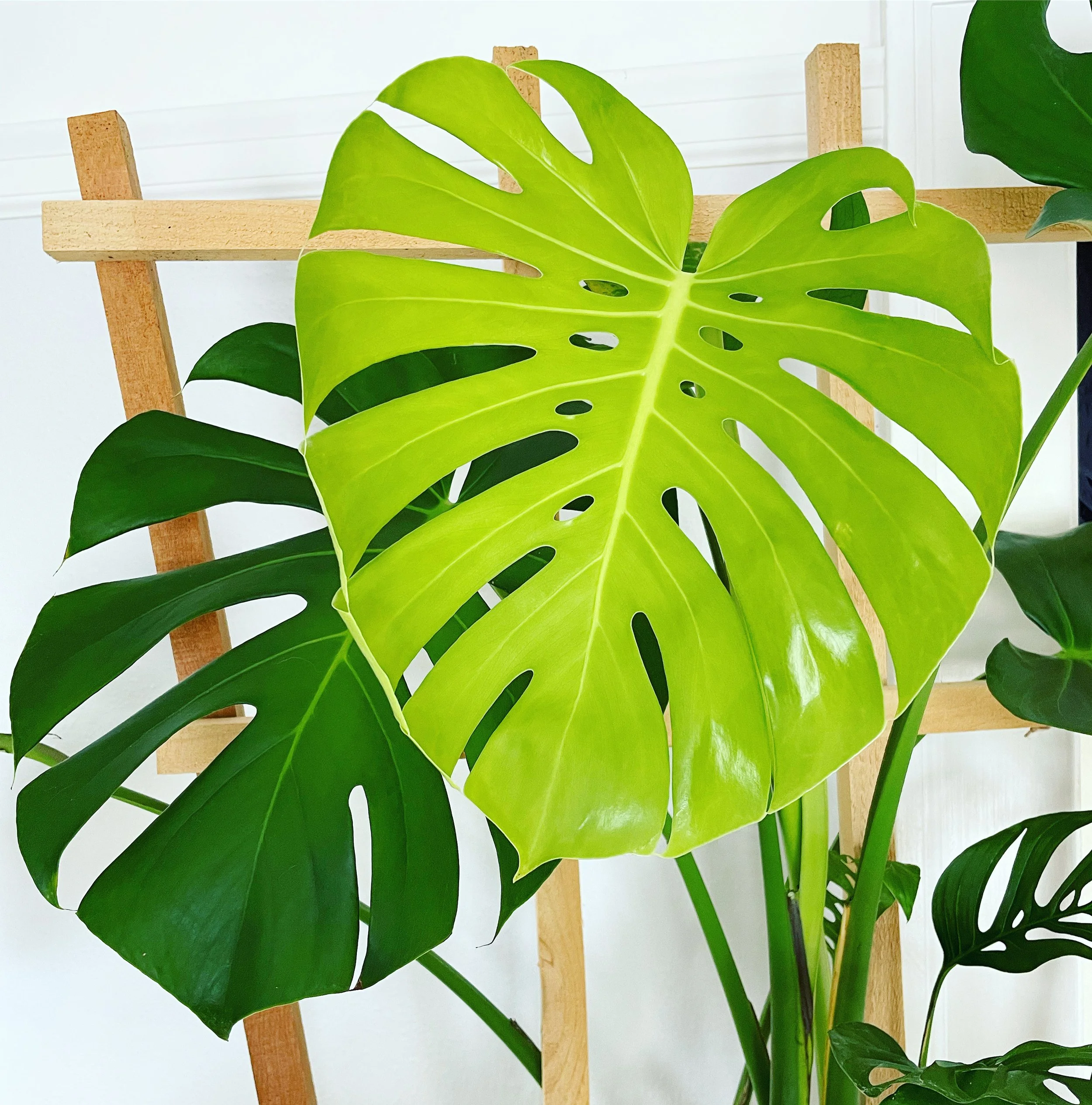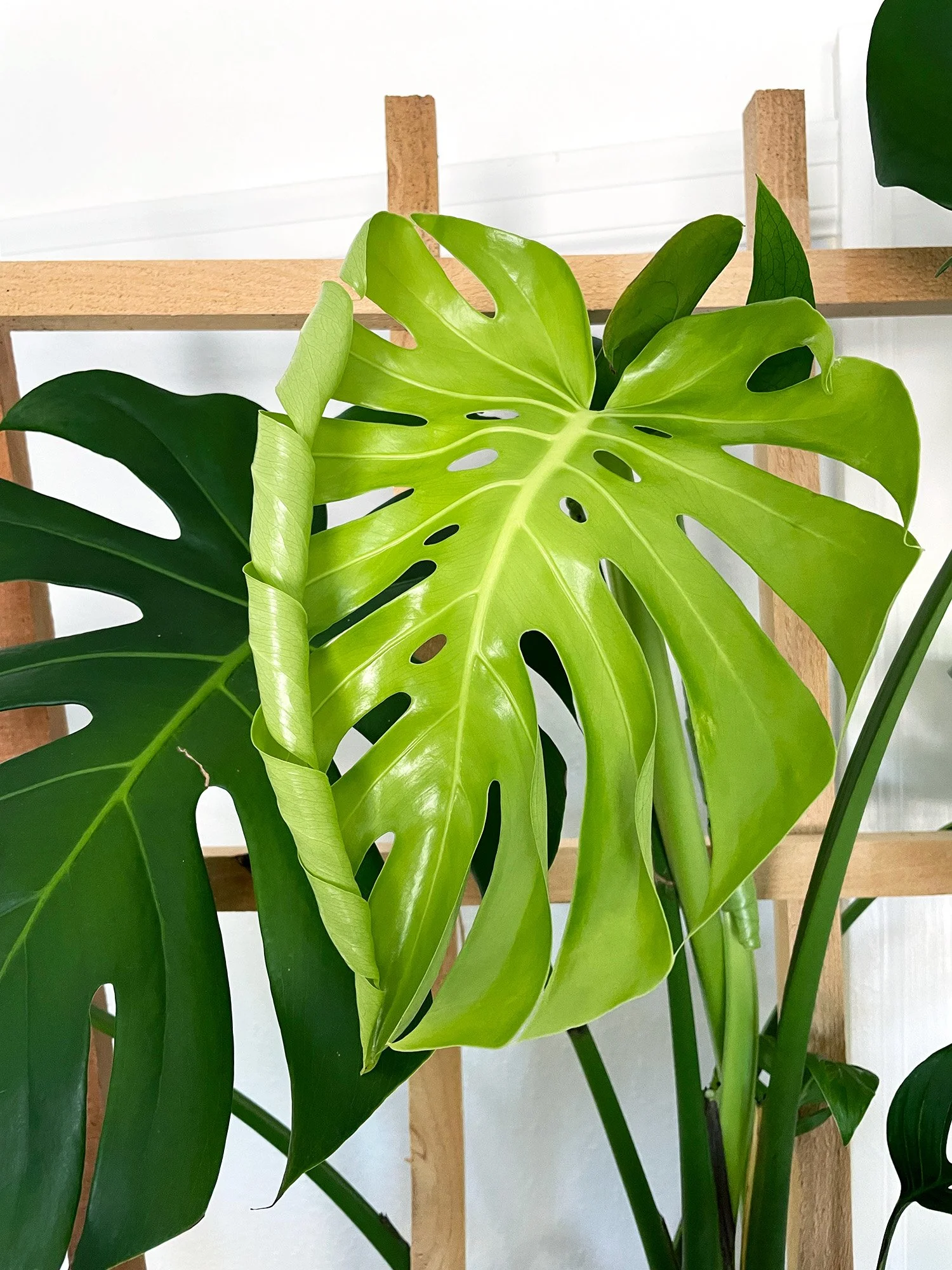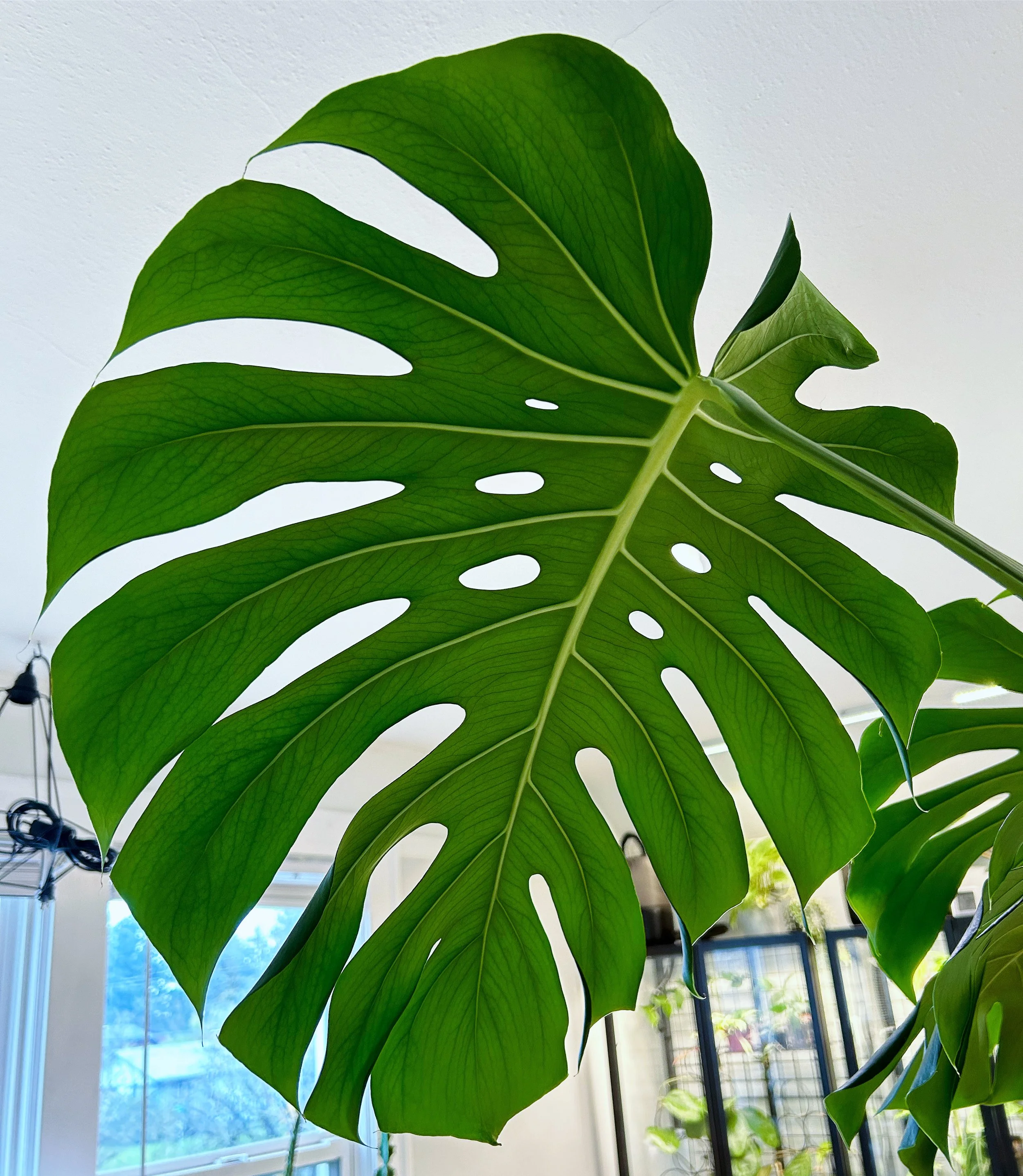Monstera deliciosa
Monstera deliciosa
Monstera, swiss cheese plant
Monstera deliciosa
Care Guide
-
Monstera deliciosa needs bright indirect light, and can even have some direct sun. In their natural environment these plants grow under the cover of large trees in the jungle, so too much direct sun can burn their leaves — especially delicate new leaves. Avoid more than 2-3 hours of direct sun exposure at a time.
-
These plants are ok to let dry out a little bit between waterings, on average water every 7-10 days. Water when the top inch of the soil is dry, and adjust to more frequent watering if you notice droopy leaves.
-
Monstera deliciosa prefers the warmer end of a temperature range of 65-80F, and cannot tolerate temperatures below 55F. Avoid cold drafts and direct airflow from heaters, as these can dry out and damage their leaves.
-
They’ll do very well in average household humidity of 45-65%. If the leaf edges get brown and crunchy, give your plant an increase in humidity by misting the entire plant every other day or so.
-
These plants needs a well draining, fairly chunky aroid mix. This helps prevent root rot and ensures excess moisture doesn’t accumulate around the roots. Because Monsteras can grow tall and get a bit heavy, a deep sturdy pot can help keep them upright.
-
As with all aroids, these plants are mildly toxic to pets and humans if ingested. Their tissues contain insoluble calcium oxalates, which can cause vomiting, nausea, and mouth irritation.
Big leaves
-
The large leaves of Monstera deliciosa absorb a ton of light to fuel it’s growth, so keeping them clean is important. Dust accumulating on the surface of the leaves can hinder the amount of light the plant can process, causing slower growth and less fenestrations on leaves. Keeping the leaves clean also helps prevent pest infestations. If possible, wipe down the leaves weekly with a damp cloth or paper towel to remove dust. Use one of the many plant wipe products that are out there to help prevent pests, I use and recommend fantastic foliage wipes!
Fenestration
-
The naturally occurring slices that create that classic Monstera leaf look are called fenestrations. They’re a mark of mature leaves, and occur when the plant is getting plenty of bright light. Fenestrations ensure that light isn’t blocked by the upper leaves and is able to make it down to the lower leaves of the plant. If your Monstera deliciosa’s new leaves are 6-8” wide or larger with no fenestrations it could mean it needs more light. Try moving it to a brighter spot or supplementing the natural light with a grow light to encourage fenestrations on future new leaves.
Fancy Monsteras
-
There is a huge variety of variegated monsteras available to plant collectors these days. Each has its own unique look and care needs, but most need consistent bright light to keep their variegation looking its best. Some of the most popular varieties are Thai Constellation, Aurea, and Albo.
-
This variety has a consistent speckled variegation pattern in white or cream color. They can also have large sections of solid white or cream along with the speckled pattern. Their variegation is considered stable, and their care needs are similar to a non-variegated plant.
-
Variegated albo monsteras have bright white varigation patterns that can start off more of a cream or yellowish color and turn white as the leaf matures. Their variegation pattern can be vastly different from plant to plant, and isn’t alway stable. They need high humidity, warm temps, and bright consistent light to maintain their variegation.
-
Monstera Aurea has yellow variegation in marbled, speckled and streaked patterns. Their color and variegation level can vary greatly between plants – even between leaves on a single plant! Their variegation can be quite unstable, and like Albos they need high amounts of light, warm temps, and high humidity to consistently produce variegation.





